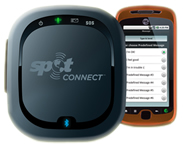So you have a solar powered RV and are considering using a microwave oven or want to know more about it. If you are not a Boondocker and prefer those full-featured RV “parking lots”, this article doesn’t pertain to you. If you are a boondocker and are living completely off the grid, there are a few things to consider in purchasing and using a microwave oven.
- Will it fit?
- What is on the electrical circuit and how much power do these consume?
- What size is your inverter?
- Is your Inverter Pure or Modified sine wave?
- What will the total wattage load be at any one time?
- What is the size of your battery bank?
- When will you be using the microwave?
- What wattage microwave to get (700 – 1100)?
Once you know the size and how much room is on the circuit, the biggest question is what wattage microwave to get?
Energy Used = Watts x Time
Dispelling the Myth: To heat/cook food in a microwave, regardless of the wattage of the microwave, will use the same amount of energy (electricity) to get the food to the same temperature. For the doubters:
- Energy = 1100 Watts × 210 seconds = 231,000 Joules
- Energy = 700 Watts × 330 seconds = 231,000 Joules
Also, note that due to a microwave’s inefficiency, they do not cook at the same energy as they draw. Connecting to a watt meter while running our 700W-rated Hamilton-Beach microwave gave a reading of 1050 watts. This has to be taken into consideration with your power requirements. Higher-priced microwaves may be more efficient but the only way to know is to check it using a watt meter while the unit is running.
Once we are armed with knowledge, and yes, we all want the food A.S.A.P., the choice comes down to the remaining factors.
- What will we be running at the same time? If you have an electric coffee maker that uses 900 watts and you want to run the microwave at the same time, without anything else running, you would be at 2000 watts, or 1600 watts respectively for an 1100 watt and 700 watt microwave. Then add in the other electrical items you will have running and you will need approximately a 3000 watt inverter and if they are both on the same electrical circuit, that will have to be at least a 20 amp circuit (see your circuit breaker size).
- Inverter Requirements: a) With a 3000 watt or larger inverter, and a 20 amp, or separate electrical circuits, you have part of what is required to run an electric coffee maker and microwave at the same time. b) For the rest of us, a 1500 watt inverter will let you use both your microwave and electric coffee maker, just not at the same time. This works fine with most existing RV electrical wiring that have 20 amp, or even a 15 amp circuit (look at your AC circuit breakers). c) Before you run out to get that new microwave, you have to have the batteries required to handle the load.
- Battery Bank Requirements: Your battery bank is of great importance, more so if you will be using your microwave after solar hours. When your inverter makes power it draws directly from your batteries. Solar, wind or even hydro-electric energy sources simply recharge the batteries. If you have a watt meter hooked up to your solar system, you will have noticed that the batteries show more voltage when the sun is on them and less when you make coffee (yes, with an electric coffee maker). By now, you know when things are off and the sun is down, you get a true reading, not one inflated by charging, or deflated by a high load. While you can do it with less, we recommend a minimum battery bank, for using your microwave and electric coffee maker using a 20 hour rate at:
- Same time: 900 amps
- Separately: 600 amps.
- Pure Sine & Modified Sine Wave Inverters: If you have old appliances, a modified sign wave inverter will work. On many, not all, new appliances, some will require a pure sine wave inverter. You may have the tool you need to test. If you use a generator not named an “Inverter”, you are most likely using modified waves. If all of your appliances work fine, you can use a modified wave inverter. Having said that, we highly recommend a pure sign wave inverter.
Conclusion: If you have a BIG RV and an unlimited budget, or are always plugged into power, the 1100 watt microwave is top shelf. Because of available space, sometimes old circuits, and the size of our inverters and battery bank, a 700 watt microwave is fantastic.






